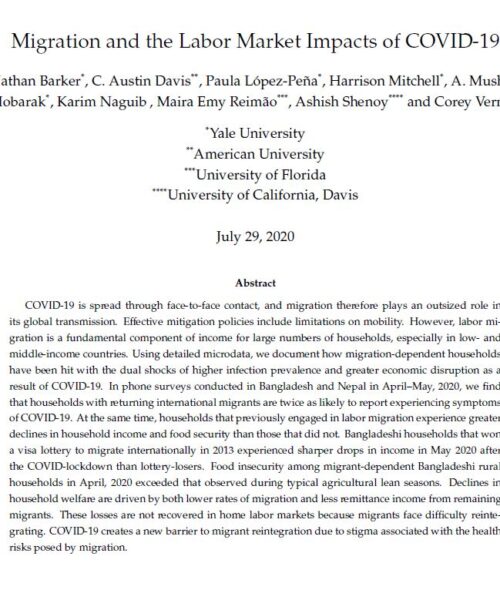
COVID-19 is spread through face-to-face contact, and migration therefore plays an outsized role in its global transmission. Effective mitigation policies include limitations on mobility. However, labor migration is a fundamental component of income for large numbers of households, especially in low- and middle-income countries. Using detailed microdata, we document how migration-dependent households have been hit with the dual shocks of higher infection prevalence and greater economic disruption as a result of COVID-19.
In phone surveys conducted in Bangladesh and Nepal in April–May, 2020, we find that households with returning international migrants are twice as likely to report experiencing symptoms of COVID-19. At the same time, households that previously engaged in labor migration experience greater declines in household income and food security than those that did not. Bangladeshi households that won a visa lottery to migrate internationally in 2013 experienced sharper drops in income in May 2020 after the COVID-lockdown than lottery-losers. Food insecurity among migrant-dependent Bangladeshi rural households in April, 2020 exceeded that observed during typical agricultural lean seasons. Declines in household welfare are driven by both lower rates of migration and less remittance income from remaining migrants. These losses are not recovered in home labor markets because migrants face difficulty reintegrating.
COVID-19 creates a new barrier to migrant reintegration due to stigma associated with the health
risks posed by migration.

